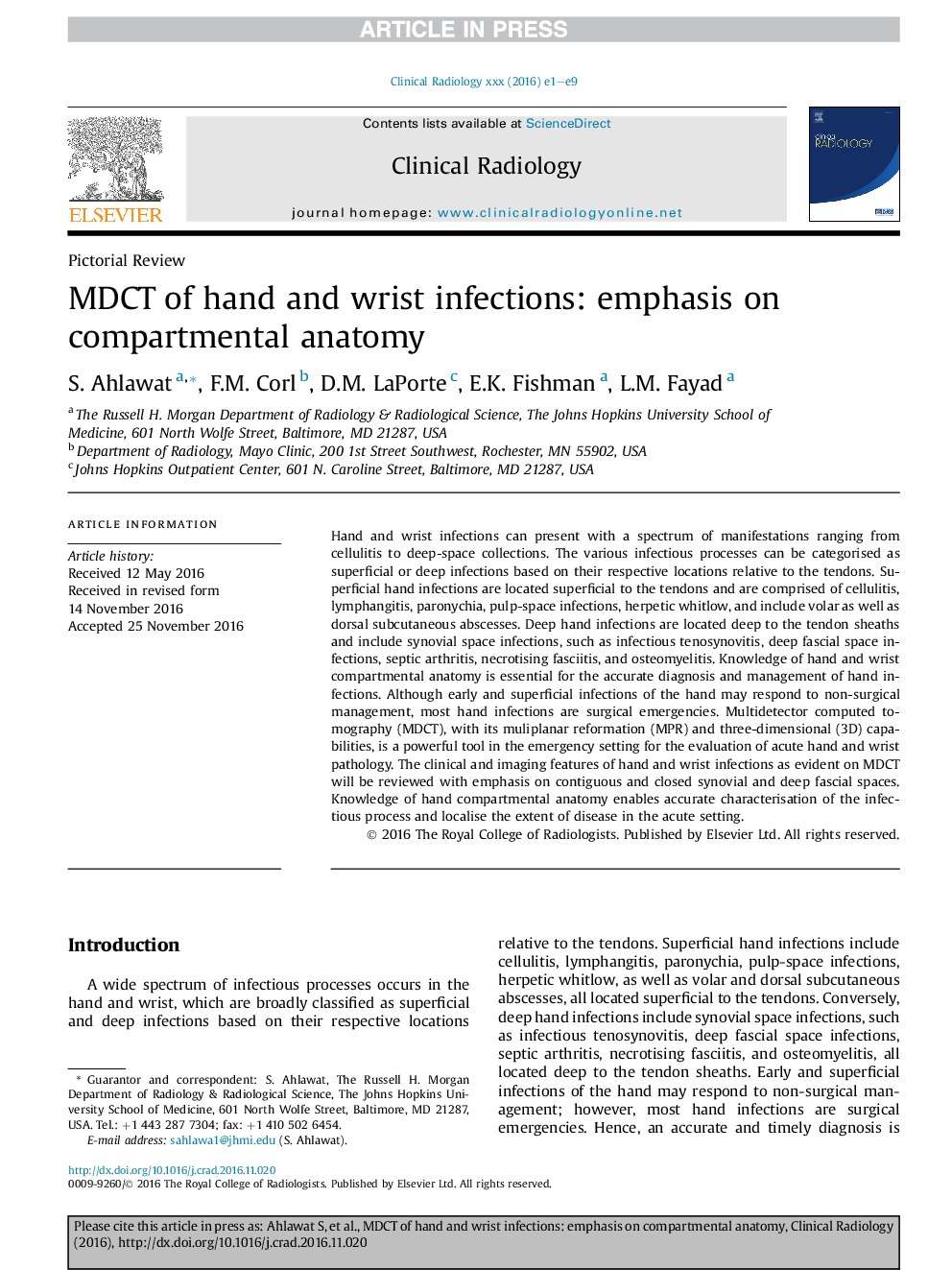| Article ID | Journal | Published Year | Pages | File Type |
|---|---|---|---|---|
| 5700590 | Clinical Radiology | 2017 | 9 Pages |
Abstract
Hand and wrist infections can present with a spectrum of manifestations ranging from cellulitis to deep-space collections. The various infectious processes can be categorised as superficial or deep infections based on their respective locations relative to the tendons. Superficial hand infections are located superficial to the tendons and are comprised of cellulitis, lymphangitis, paronychia, pulp-space infections, herpetic whitlow, and include volar as well as dorsal subcutaneous abscesses. Deep hand infections are located deep to the tendon sheaths and include synovial space infections, such as infectious tenosynovitis, deep fascial space infections, septic arthritis, necrotising fasciitis, and osteomyelitis. Knowledge of hand and wrist compartmental anatomy is essential for the accurate diagnosis and management of hand infections. Although early and superficial infections of the hand may respond to non-surgical management, most hand infections are surgical emergencies. Multidetector computed tomography (MDCT), with its muliplanar reformation (MPR) and three-dimensional (3D) capabilities, is a powerful tool in the emergency setting for the evaluation of acute hand and wrist pathology. The clinical and imaging features of hand and wrist infections as evident on MDCT will be reviewed with emphasis on contiguous and closed synovial and deep fascial spaces. Knowledge of hand compartmental anatomy enables accurate characterisation of the infectious process and localise the extent of disease in the acute setting.
Related Topics
Health Sciences
Medicine and Dentistry
Oncology
Authors
S. Ahlawat, F.M. Corl, D.M. LaPorte, E.K. Fishman, L.M. Fayad,
